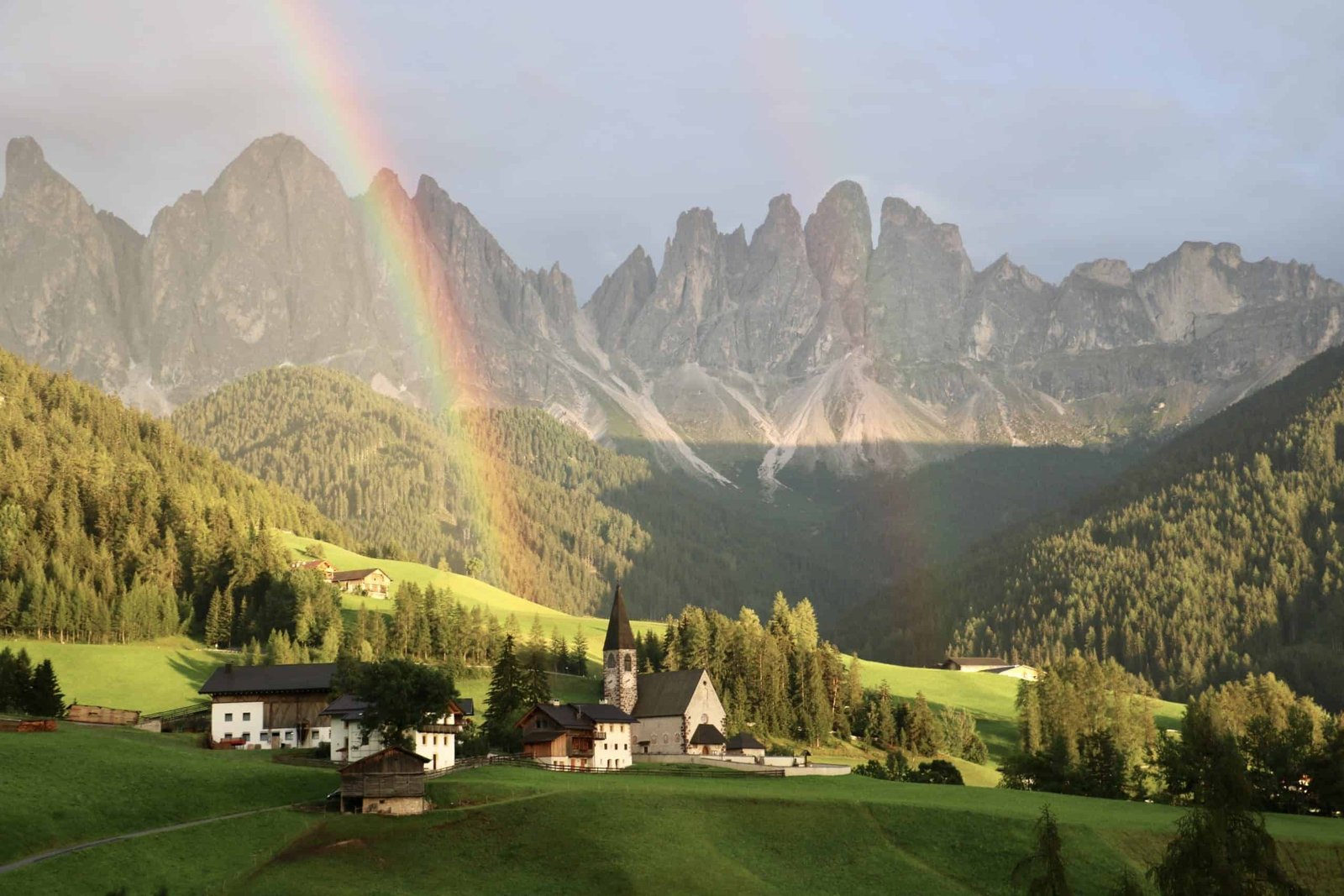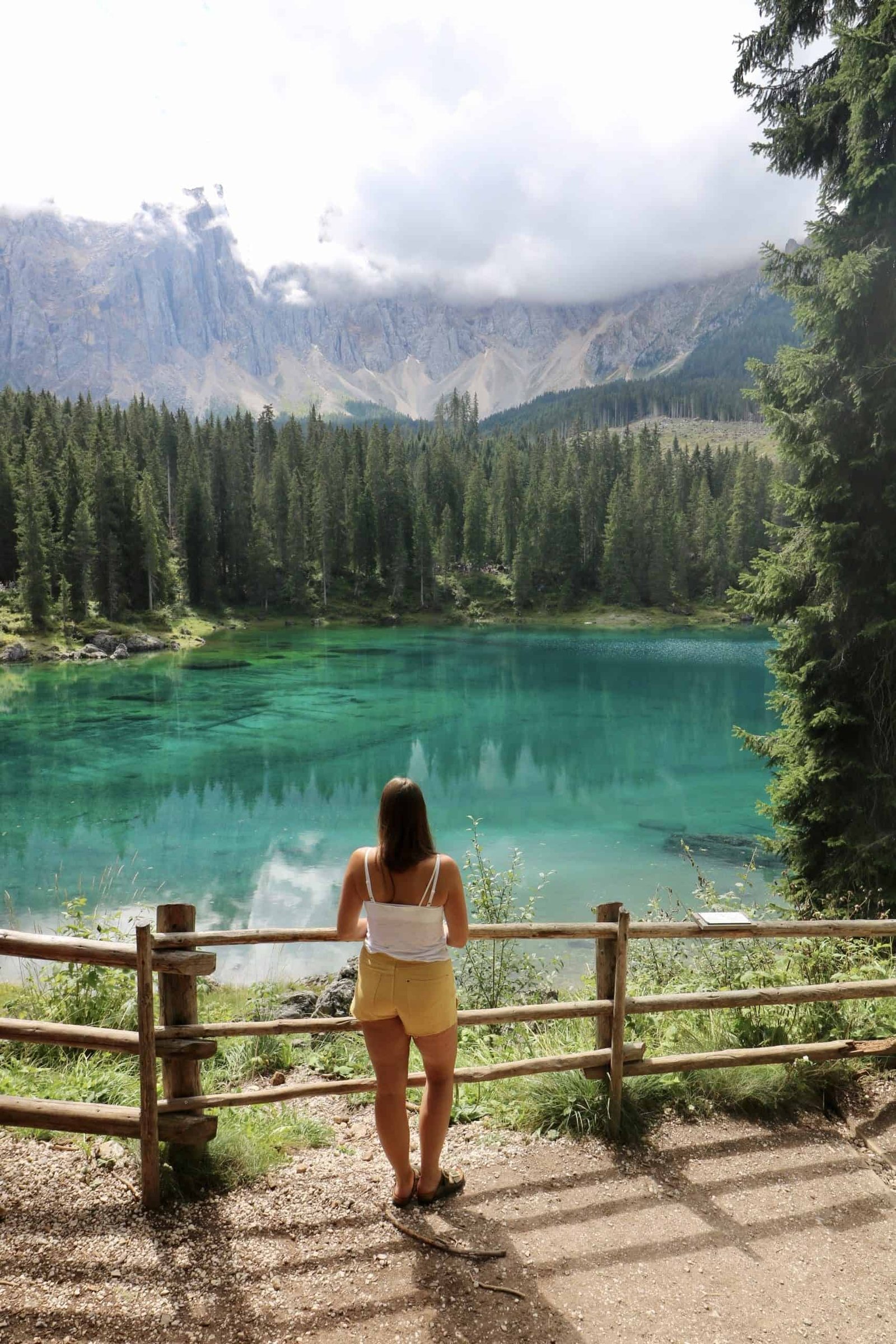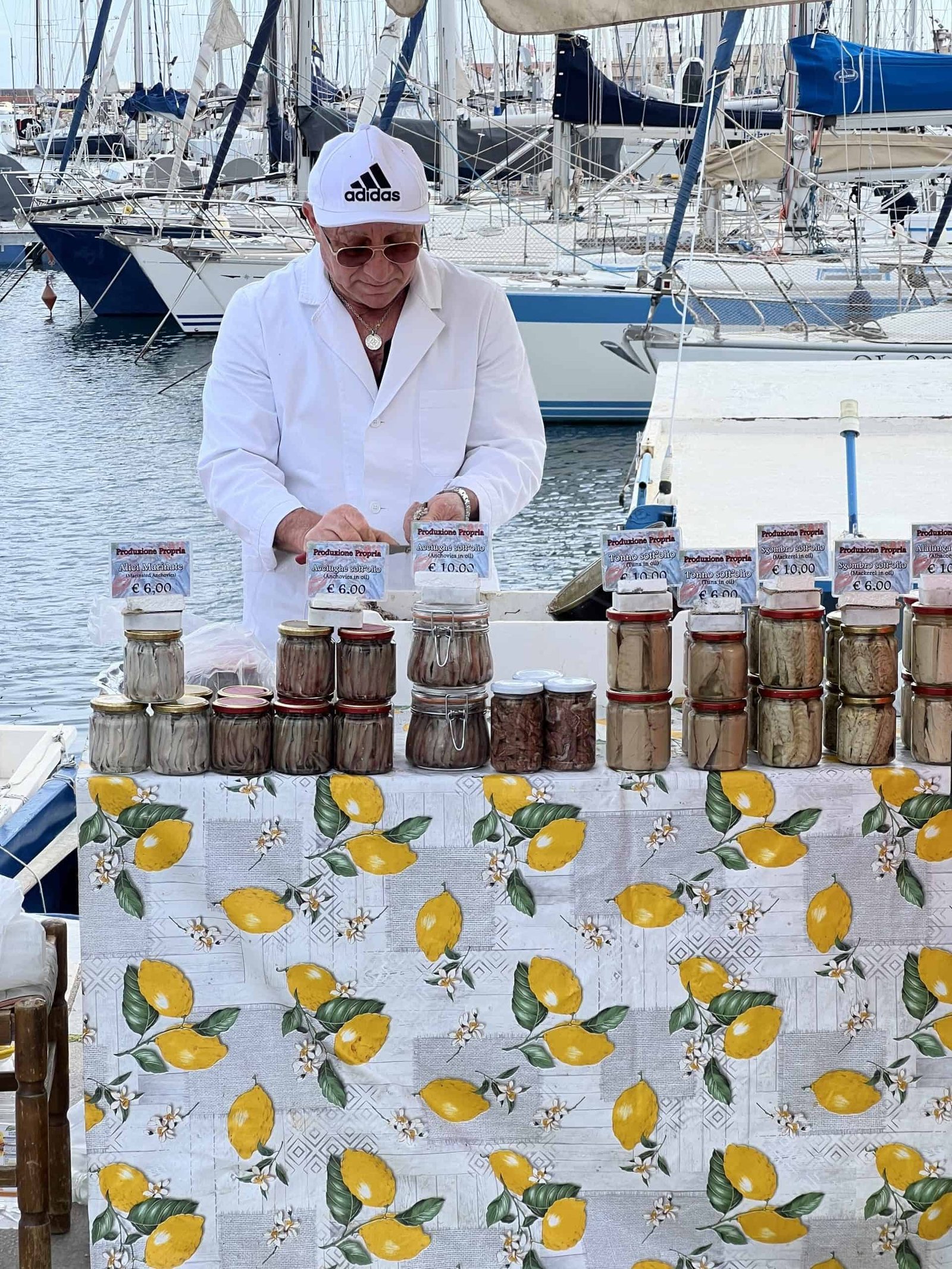Italy is a dream destination for travelers, offering a perfect blend of history, culture, natural beauty, and world-renowned cuisine. From the ancient ruins of Rome and the romantic canals of Venice to the stunning coastline of the Amalfi Coast and the rolling hills of Tuscany, Italy’s diverse landscapes and cities provide endless opportunities for exploration.
History enthusiasts can marvel at landmarks like the Colosseum, Pompeii, and Florence’s Duomo, while art lovers can admire masterpieces in the Uffizi Gallery or Michelangelo’s David. Food and wine are central to the Italian experience, with regional specialties like Neapolitan pizza, pasta in Bologna, and fine wines in Chianti offering a culinary journey through the country.
For nature lovers, the Dolomites provide dramatic peaks for hiking and skiing, while Lake Como and Lake Garda offer serene retreats. Beachgoers can relax on the pristine shores of Sardinia or Sicily, while the charming villages of Cinque Terre captivate with their colorful beauty.
Table of Contents
Quick Facts
Language
Official language is Italian. Regional dialects are common.
Religion
Predominantly Roman Catholic
Currency
Euro (EUR, €)
Capital
Rome, known as the “Eternal City”
Visa
Italy is part of the Schengen Area, allowing visa-free travel for up to 90 days for citizens of many countries, including the EU, USA, Canada, and Australia.
Climate
Italy has a Mediterranean climate, with hot, dry summers and mild, wet winters. Northern regions experience colder winters, especially in the Alps
Power Plugs
Type C, F, and L plugs with a standard voltage of 230V and a frequency of 50Hz
Apps
Google Maps for navigation, Trenitalia or Italo for train schedules, and MyTaxi or FreeNow for rides. TheFork helps with restaurant reservations
Emergency Numbers
112 – General emergency hotline
Tipping
Round up the bill at casual cafes or leave 5–10% for excellent service in restaurants
Time Zone
Central European Time (CET) (UTC+1) and switches to Central European Summer Time (CEST) (UTC+2) from late March to late October
Transportation
Trains, busses, Metro, Taxis, Ferries, Car Rental
Language
Official language is Italian. Regional dialects are common.
Religion
Predominantly Roman Catholic
Currency
Euro (EUR, €)
Capital
Rome, known as the “Eternal City”
Visa
Italy is part of the Schengen Area, allowing visa-free travel for up to 90 days for citizens of many countries, including the EU, USA, Canada, and Australia.
Climate
Italy has a Mediterranean climate, with hot, dry summers and mild, wet winters. Northern regions experience colder winters, especially in the Alps
Power Plugs
Type C, F, and L plugs with a standard voltage of 230V and a frequency of 50Hz
Apps
Google Maps for navigation, Trenitalia or Italo for train schedules, and MyTaxi or FreeNow for rides. TheFork helps with restaurant reservations
Emergency Numbers
112 – General emergency hotline
Tipping
Round up the bill at casual cafes or leave 5–10% for excellent service in restaurants
Time Zone
Central European Time (CET) (UTC+1) and switches to Central European Summer Time (CEST) (UTC+2) from late March to late October
Transportation
Trains, busses, Metro, Taxis, Ferries, Car Rental
Where is Italy?
Italy is located in Southern Europe, on the Mediterranean Sea, bordered by France, Switzerland, Austria, and Slovenia to the north. It is a peninsula shaped like a boot, with islands such as Sicily and Sardinia.
What to do in Italy?
Italy offers a wealth of activities, with each region providing unique experiences tied to its culture, history, and landscapes.
In Northern Italy, the Dolomites, a UNESCO World Heritage Site, are a must-visit for nature and adventure enthusiasts. These dramatic peaks offer some of the best hiking, climbing, and skiing in Europe, along with picturesque alpine villages like Cortina d’Ampezzo and Ortisei. Nearby, Lake Como invites visitors to explore its serene waters by boat, while the elegant towns of Bellagio and Varenna provide stunning views. In Milan, discover world-class shopping, the iconic Duomo di Milano, and cultural gems like Leonardo da Vinci’s Last Supper. Venice, with its romantic canals and vibrant islands of Murano and Burano, adds to the region’s charm.
In Central Italy, Tuscany captivates with its rolling hills, vineyards, and medieval towns like Siena and San Gimignano. Florence, the cradle of the Renaissance, dazzles with artistic treasures like Michelangelo’s David and the Uffizi Gallery. In nearby Umbria, visit Assisi, home to the Basilica of St. Francis, and enjoy authentic countryside charm. In Rome, marvel at the grandeur of the Colosseum, the Roman Forum, and the Pantheon, while exploring the treasures of the Vatican City, including the Sistine Chapel and St. Peter’s Basilica.
In Southern Italy, the Amalfi Coast enchants with its dramatic cliffs, pastel-colored villages like Positano and Ravello, and crystal-clear waters. Naples, the birthplace of pizza, serves as a gateway to the ancient ruins of Pompeii and Herculaneum, as well as the imposing Mount Vesuvius. In Sicily, explore the Greek ruins of Agrigento, the vibrant markets of Palermo, and the volcanic landscapes of Mount Etna. Puglia, in the southeast, is known for its whitewashed towns, unique trulli houses in Alberobello, and beautiful Adriatic beaches.
In Sardinia, enjoy pristine beaches, turquoise waters, and ancient nuraghe stone structures.
Volcanoes in Italy
Mount Vesuvius, near Naples, famously destroyed Pompeii and Herculaneum in 79 AD. Visitors can hike to its crater for stunning views of the Bay of Naples. Mount Etna in Sicily, Europe’s tallest and most active volcano, features lava fields and fertile vineyards, accessible via cable car or guided tours. In the Aeolian Islands, Stromboli dazzles with frequent eruptions visible from summit hikes or boat tours, while Vulcano is known for its sulfur-rich fumaroles and mud baths. The Phlegraean Fields near Naples feature bubbling mud pools and archaeological ruins like Baiae, submerged by volcanic activity. Many of these volcanoes remain very active, with eruptions and gas emissions occasionally disrupting travel and access. Visitors are advised to check local updates and follow safety guidelines when planning their trip.
Caves in Italy
Italy’s caves offer a fascinating blend of natural beauty and history, making them unique destinations for exploration. The Grotta di Frasassi in Marche is famous for its massive chambers like the Ancona Abyss, adorned with stunning stalactites and underground lakes. In Sardinia, the Cala Luna Caves open directly onto the beautiful Cala Luna Beach, perfect for combining with snorkeling or boat trips, while the nearby Grotta di Nettuno near Alghero features dramatic stalactites and a saltwater lake accessible by boat or a scenic staircase.
The Grotta del Vento in Tuscany captivates visitors with its underground rivers and cool, well-lit paths, while the Blue Grotto in Capri amazes with glowing blue waters, accessible by small rowboats. In Puglia, the Grotta di Castellana impresses with highlights like the sparkling White Cave and the dramatic Grave chamber. Near Trieste, the Grotta Gigante is one of the world’s largest caves, featuring massive chambers and a geology museum.
The Pertosa-Auletta Caves in Campania offer underground rivers and glimpses into ancient human settlements, blending geology and archaeology. Finally, the Matera cave dwellings in Basilicata, now a UNESCO site, provide a cultural twist with rock-hewn homes and churches transformed into museums and boutique hotels.
Waterfalls in Italy
Italy’s waterfalls are stunning natural attractions, but due to the country’s generally dry climate, many are at their best in early spring when snowmelt and rainfall feed the water flow. The Cascata delle Marmore in Umbria, a 165-meter man-made marvel, offers dramatic cascades and hiking trails, with controlled water releases enhancing its beauty. In Lombardy, the Serio Falls, Italy’s tallest natural waterfall at 315 meters, flows only on select days, creating a rare spectacle. Tuscany’s Saturnia Falls stands out as a year-round thermal retreat with cascading warm pools.
The Toce Falls in Piedmont, plunging 143 meters, is most impressive in summer when water is released from the dam above, while the Cascata di Stroppia in Piedmont and the Cascate di Riva in South Tyrol are surrounded by breathtaking alpine scenery and are best visited in spring. Near Lake Garda, the Varone Falls tumble into a dramatic gorge, offering easy access and stunning views, while Lazio’s Isola del Liri Falls uniquely flows through the heart of the town. In Sicily, the Cascata di Catafurco, nestled in the Nebrodi Mountains, offers crystal-clear waters and serene surroundings but may dry out later in the season. Timing your visit to early spring ensures the best experience of Italy’s breathtaking waterfalls.
Beaches in Italy
Italy’s beaches are as diverse as its landscapes, offering everything from secluded coves to lively coastal resorts. Along the Amalfi Coast, beaches like Spiaggia Grande in Positano and Marina di Praia are surrounded by dramatic cliffs and picturesque towns. In Sardinia, Costa Smeralda is famous for its crystal-clear waters and white sand, while Cala Luna combines stunning beaches with nearby caves for exploration.
Sicily’s San Vito Lo Capo and Scala dei Turchi boast turquoise waters and unique rock formations, perfect for relaxation or photography. The beaches of Puglia, such as Baia dei Turchi and Pescoluse, known as the “Maldives of Italy,” offer shallow, clear waters ideal for families. In Tuscany, Spiaggia di Baratti blends pristine shores with Etruscan ruins, while Rimini and the Adriatic coast are renowned for their lively atmosphere, ideal for nightlife and water sports.
For those seeking tranquility, Elba Island and Lampedusa’s Rabbit Beach provide untouched beauty, perfect for a peaceful retreat.
Other Italian Landmarks
In Rome, iconic sites like the Colosseum, Roman Forum, and Pantheon take visitors back to the grandeur of the Roman Empire, while Vatican City is home to St. Peter’s Basilica and the Sistine Chapel. In Florence, the Duomo, Ponte Vecchio, and Uffizi Gallery highlight the Renaissance’s artistic and architectural achievements.
Venice enchants with its Grand Canal, St. Mark’s Basilica, and the Doge’s Palace, while Pisa’s Leaning Tower remains an enduring symbol of Italian ingenuity. In Naples, the preserved ruins of Pompeii and Herculaneum offer a glimpse into life during ancient times, with Mount Vesuvius looming in the background.
Natural landmarks include the Amalfi Coast, known for its dramatic cliffs and picturesque towns, and the Dolomites, offering breathtaking alpine landscapes. Sicily’s Valley of the Temples and Mount Etna, as well as Sardinia’s Nuraghe Su Nuraxi, reflect the island’s unique history and geology.
Italian Food
Italy is a paradise for food lovers, offering a rich and diverse cuisine that varies by region, season, and tradition. Meals in Italy are more than just food—they are an integral part of the culture, emphasizing fresh, local ingredients and simple, yet flavorful, preparations.
Northern Italy:
- Known for creamy and hearty dishes, the north features specialties like risotto, especially Risotto alla Milanese, flavored with saffron, and polenta, a comforting cornmeal dish often paired with stews.
- In Bologna, the culinary capital, try tagliatelle al ragù (Bolognese sauce) and tortellini in brodo (pasta stuffed with meats and served in broth).
- The Lombardy and Piedmont regions are famous for osso buco, veal shank slow-cooked with vegetables, and bagna cauda, a warm dip made from garlic and anchovies.
Central Italy:
- Tuscany is renowned for its simple, rustic dishes, like bistecca alla Fiorentina (thick-cut T-bone steak) and ribollita, a hearty vegetable and bread soup.
- Umbrian cuisine is rich in truffles, often shaved over pasta or eggs, and porchetta, a savory, herb-stuffed roasted pork.
- Rome’s cuisine offers iconic pasta dishes like cacio e pepe (cheese and black pepper), carbonara (with eggs, cheese, and guanciale), and amatriciana (tomato and guanciale sauce).
Southern Italy:
- The south is known for its bold and vibrant flavors. Naples is the birthplace of pizza Margherita, a masterpiece of simplicity with tomatoes, mozzarella, and basil.
- Seafood dominates the coastal regions, with dishes like spaghetti alle vongole (spaghetti with clams) and grilled octopus.
- In Sicily, savor arancini (fried rice balls), caponata (a sweet and sour eggplant dish), and cannoli, a famous sweet treat.
- In Sardinia you will find Culurgiones, a type of stuffed pasta, similar to ravioli, filled with potatoes, pecorino cheese, and mint, and often served with a simple tomato sauce.
Italian Dining Culture:
Meals in Italy often follow a traditional structure:
- Antipasti (Starters): Plates of cured meats, cheeses, bruschetta, or marinated vegetables.
- Primi (First Course): Pasta, risotto, or soup.
- Secondi (Main Course): Meat, fish, or vegetarian dishes, often accompanied by contorni (side dishes) like roasted vegetables or salads.
- Dolci (Desserts): Tiramisu, panna cotta, gelato, or a simple espresso to finish.
Tours in Italy
Cultural and Historical Tours: Explore the ancient ruins of Rome, including the Colosseum, Roman Forum, and Pantheon, with guided tours that bring the city’s history to life. In Florence, art tours cover the Uffizi Gallery, Accademia Gallery, and iconic landmarks like the Duomo. In Venice, walking or boat tours provide insights into the city’s unique architecture and history, including St. Mark’s Basilica and the Doge’s Palace.
Food and Wine Tours: Tuscany is ideal for wine-tasting tours in Chianti or food experiences in towns like Siena and San Gimignano. In Bologna, participate in cooking classes to learn how to make pasta, or take a street food tour in Naples to sample authentic pizza, pastries, and local delicacies.
Nature and Adventure Tours: In the Dolomites, guided hiking and biking tours offer access to breathtaking mountain landscapes, alpine lakes, and hidden valleys. Boat tours in Lake Como provide scenic views of elegant villas and charming lakeside towns. The Amalfi Coast is perfect for exploring by boat, with tours to Positano, Ravello, and hidden coves.
Island Tours: Discover the beauty of Sicily with tours of Mount Etna, Taormina, and the ancient ruins of Agrigento. In Sardinia, explore pristine beaches and ancient nuraghe stone structures through guided day trips.
Specialized Tours: Architecture enthusiasts can enjoy tours of Milan’s Duomo or Venice’s Canals and Bridges, while WWII history buffs might explore the ruins of Pompeii or the Monte Cassino Battlefield. For film lovers, themed tours visit locations from movies like The Godfather in Sicily.
Budget
Italy definitely is no cheap travel destination. Depending on where you are Basic Hotels can cost about 80 EUR a night.
- Budget Travelers: A daily budget of €50–70 can cover stays in hostels or budget guesthouses (€20–40 per night), meals at local trattorias or street food (€5–10 per meal), and public transportation.Mid-Range Travelers: With €100–200 per day, you can enjoy comfortable hotels (€80–120 per night), dine at mid-range restaurants (€15–30 per meal), and participate in guided tours or activities like museum visits.
- Luxury Travelers: Spending €250+ per day offers access to boutique hotels, fine dining, private tours, and premium transport options such as first-class train tickets.
Additional costs include entrance fees for landmarks (e.g., €12–20 for the Colosseum or Uffizi Gallery) and transport between cities (train fares range from €20–70, depending on the route).
Regions of Italy
Italy is divided into 20 regions, each offering unique landscapes, culture, and history.
- Northern Italy: Known for its mountains, lakes, and sophisticated cities. The Dolomites in Trentino-Alto Adige offer stunning alpine scenery, while Lake Como and Lake Garda are famous for their picturesque waters. Cities like Milan (Lombardy) and Turin (Piedmont) are hubs for fashion and industry. The Veneto region features Venice and its romantic canals, while Emilia-Romagna is a food lover’s paradise with Bologna and Parma.
- Central Italy: The cultural heart of the country. Tuscany is celebrated for its rolling hills, vineyards, and cities like Florence and Siena, while Umbria offers spiritual and medieval charm in Assisi and Perugia. In Lazio, Rome stands as the historical and political capital, home to iconic landmarks like the Colosseum and Vatican City.
- Southern Italy: A mix of rugged landscapes, historic towns, and sun-soaked coasts. The Amalfi Coast (Campania) is renowned for its dramatic beauty, while Naples and Pompeii showcase ancient Roman life. Puglia offers unique architecture like the trulli houses of Alberobello, alongside stunning beaches. Basilicata and Calabria are known for their unspoiled beauty and historic towns.
- Sicily and Sardinia: Italy’s largest islands have distinct identities. Sicily boasts Greek ruins in Agrigento, vibrant cities like Palermo, and the towering Mount Etna. Sardinia is famous for its pristine beaches, rugged interior, and ancient nuraghe stone structures.
Each region in Italy offers its own flavor of art, history, food, and natural beauty, ensuring unforgettable experiences wherever you go.
The Italian People
The people of Italy, known as Italians, are renowned for their warmth, passion, and deep connection to their culture. Family plays a central role in Italian life, often forming the heart of social interactions. Italians are known for their expressive communication style, often accompanied by lively gestures and a genuine enthusiasm for conversation.
Hospitality is a cornerstone of Italian culture, and visitors are often greeted with friendliness and generosity, whether in a bustling city or a quiet rural village. Italians take immense pride in their traditions, from regional cuisines and festivals to their strong sense of local identity, which varies significantly between regions like Tuscany, Sicily, and Lombardy.
The Italian way of life values leisure, good food, and a sense of community, making the people one of the country’s most memorable and welcoming aspects for travelers.
Italian Infrastructure
Italy has an extensive network of highways (autostrade), connecting major cities and regions efficiently. Toll roads are common, so having cash or a credit card handy is important. Rural roads, especially in Tuscany or Sicily, can be narrower but still navigable.
The railway system is reliable and extensive, with high-speed trains like Trenitalia Frecciarossa and Italo connecting major cities such as Rome, Milan, Florence, and Venice. Regional trains serve smaller towns and are more affordable but slower.
Italy is served by multiple international airports, including Rome Fiumicino, Milan Malpensa, and Venice Marco Polo, as well as smaller regional airports for domestic and European flights.
Urban centers have efficient public transport systems, including metro lines (Rome, Milan, Naples), buses, and trams. Cities like Venice rely on water buses (vaporetto) for transportation.
Ferries connect mainland Italy to islands like Sardinia, Sicily, and Capri, as well as to destinations across the Mediterranean.
Electricity is reliable throughout the country, with a standard voltage of 230V. Water is safe to drink in most areas, and public fountains often provide free, clean drinking water.
Internet and Mobile Networks: Internet coverage is widespread, with reliable 4G and growing 5G availability in urban and suburban areas. Free Wi-Fi is common in hotels, cafes, and public spaces, though rural areas may have slower connectivity.
Rural areas, though less modernized, maintain a charming authenticity, with infrastructure focused on agricultural and local needs.
Italy's Airports
Rome Fiumicino Airport (FCO) – Italy’s largest and busiest airport, located near Rome, offering extensive international and domestic connections.
Milan Malpensa Airport (MXP) – A major hub in northern Italy, serving international and long-haul flights.
Florence Peretola Airport (FLR) – A smaller airport ideal for exploring Tuscany
Sicily and Sardinia both have two Airports each. Catania Fontanarossa Airport (CTA) and Palermo Airport (PMO) for Sicily and Cagliari Elmas Airport (CAG), Alghero Fertilia Airport (AHO) & Olbia Costa Smeralda Airport (OLB) for Sardinia.
Is Italy safe?
Italy is generally a very safe destination for travelers. Violent crime is rare, but petty crimes like pickpocketing and scams can occur in busy tourist areas such as Rome, Florence, and Venice. To stay safe, keep an eye on your belongings, especially in crowded places, and be cautious of overly persistent street vendors or unofficial tour guides. Road safety in cities and rural areas requires attention, especially when driving or crossing streets.

Hi! We’re Maxi and Gerrit – two adventurers with a passion for traveling, meeting amazing people, and uncovering hidden gems around the world.
.
For us, it’s not just about capturing the perfect photo (though we love doing that, too). It’s about diving into the unknown, exploring places off the beaten path, and discovering the extraordinary in the unexpected..
.
At the end of a thrilling and sometimes exhausting day, there’s nothing better than savoring delicious food – that’s our simple recipe for happiness. Join us as we share our stories, experiences, and the joy of exploring life’s wonders!







